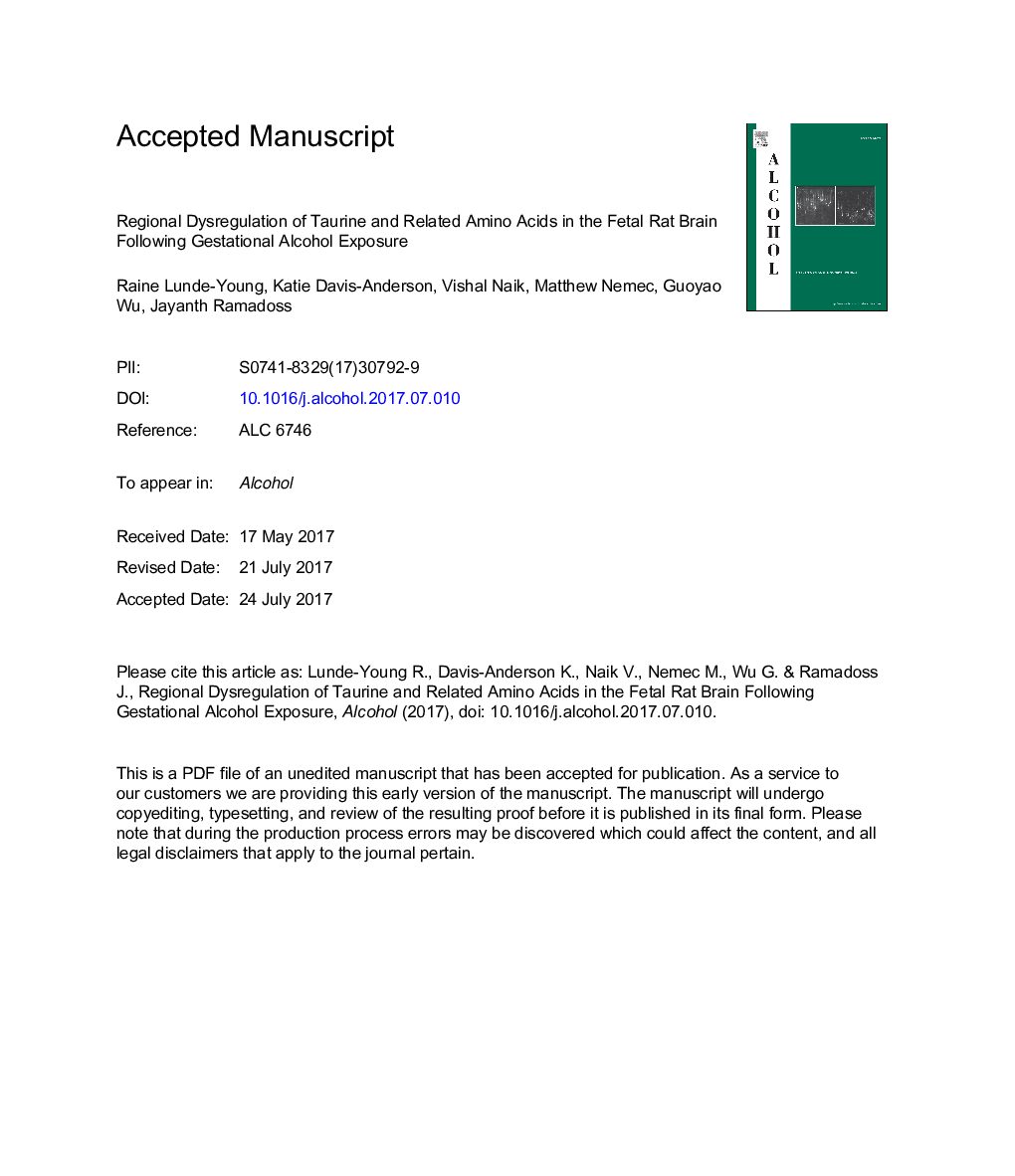| Article ID | Journal | Published Year | Pages | File Type |
|---|---|---|---|---|
| 7501515 | Alcohol | 2018 | 21 Pages |
Abstract
The fetal brain exhibits exquisite alcohol-induced regional neuronal vulnerability. A candidate mechanism for alcohol-mediated brain deficits is disruption of amino acid (AA) bioavailability. AAs are vitally important for proper neurodevelopment, as they comprise the most abundant neurotransmitters in the brain and act as neurotransmitter precursors, nitric oxide donors, antioxidants, and neurotrophic factors, which induce synaptogenesis, neuronal proliferation, and migration. We hypothesized that gestational alcohol alters brain AA concentrations, disrupts AAs associated with neuropathogenesis, and that alterations are region-specific. We assigned pregnant Sprague-Dawley rats to either a pair-fed control or a binge alcohol treatment group on gestational day (GD) 4. Alcohol animals were acclimatized via a once-daily orogastric gavage of a 4.5Â g/kg alcohol dose from GD 5-10, and progressed to a 6Â g/kg alcohol dose from GD 11-20. Pair-fed animals received isocaloric maltose dextrin (once daily; GD 5-20). Fetal cerebral cortex, cerebellum, and hippocampus were collected on GD 21. Following collection, Fluorometric High Performance Liquid Chromatography (HPLC) involving pre-column derivatization with o-phthaldialdehyde quantified regional content of 22 AAs. Chronic binge alcohol administration to pregnant dams regionally altered AA concentrations in all three structures, with the cerebral cortex exhibiting the least vulnerability and the hippocampus exhibiting maximal vulnerability. We conjecture that the AA imbalances observed in this study are critically implicated in pathological and compensatory processes occurring in the brain in response to gestational alcohol exposure.
Keywords
Related Topics
Life Sciences
Biochemistry, Genetics and Molecular Biology
Biochemistry
Authors
Raine Lunde-Young, Katie Davis-Anderson, Vishal Naik, Matthew Nemec, Guoyao Wu, Jayanth Ramadoss,
